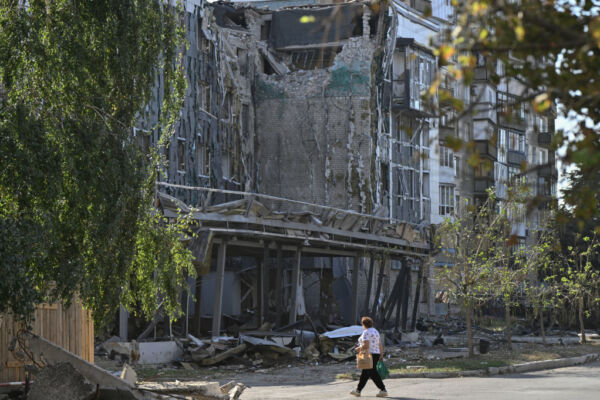Recent reports from the front lines between Russia and Ukraine reveal that Russian forces have seized the strategic town of Vuhledar in eastern Ukraine. Ukrainian military officials and analysts acknowledge this development as a setback that may not significantly alter the course of the conflict, but it underscores the deteriorating situation in Kyiv.
According to a report by the Institute for the Study of War (ISW) on Tuesday (October 1st), Russian forces likely occupied Vuhledar on October 1st. It remains unclear if Russian forces will make swift advancements beyond Vuhledar in the near future.
Vuhledar has been a key town fiercely defended by Ukrainian forces over the past two years, and its fall comes after intense summer battles along the eastern front, leading to Ukraine losing thousands of square kilometers of territory.
The ISW report indicates that satellite imagery from September 30th and October 1st showed Russian forces raising the Russian flag in different areas of Vuhledar and freely moving about. A Russian military blog claimed the capture of the town on October 1st.
Furthermore, a Ukrainian soldier reported on October 1st that planned evacuations of some Ukrainian forces from Vuhledar had taken place to prevent being encircled. The Russian military blog claimed the Ukrainian forces began withdrawing on September 30th.
In a statement on Wednesday (October 2nd), the Ukrainian military stated they were withdrawing from Vuhledar to “protect military personnel and equipment.” Reports on Ukrainian casualties are currently unclear, but widespread coverage of the withdrawal suggests that most Ukrainian forces may have avoided being surrounded by Russian troops, minimizing potential casualties.
Vuhledar was a fortified stronghold situated on a hill surrounded by vast fields and near two major transport routes. Ukrainian soldiers could observe approaching Russian forces from a distance and coordinate counterattacks effectively. This strategic advantage is now in the hands of the Russian military.
According to the Associated Press, for over a year since August 2022, the 72nd Brigade’s press officer, Arsenii Prylipka, who was responsible for defending Vuhledar, noted, “Their main strategy was to encircle us from the flanks, and they have been doing so for six to seven months continuously with air attacks – due to this strategy, they have successfully drained our resources as we do not have as many as they do.”
Russia has been dropping nearly 120 air-dropped bombs per day on average and around 3,000 per month since August 2022. These bombs are modified weapons from the Soviet era with updated navigational technology.
Before the loss of this military stronghold, Ukrainian President Zelensky visited the U.S. last week and presented the “Victory Plan” to the White House.
The Biden administration provided an additional $8 billion in military aid to Ukraine and reaffirmed that supporting Ukraine’s defense against Russia remains a top priority for the U.S. However, the U.S. has so far rejected Ukraine’s request to use the MGM-140 Army Tactical Missile System (ATACMS) to target Russian airports and other vital objectives.
After unsuccessful attempts to capture Vuhledar over two years, Russian forces changed their strategy earlier this year and ultimately seized the town. The population of Vuhledar, once 14,000 people, has dwindled to less than 100 residents due to fierce battles.
The ISW report quoted Russian sources indicating that Russian forces continue their advance northeast from Vuhledar.
Ukrainian military authorities believe the next Russian objective is to drive Ukrainian forces out of the nearby town of Kurakhove and then attempt to access the key strategic hub city of Pokrovsk through Kurakhove.
Ivan Tymochko, chairman of the Ukrainian Ground Forces Reserve Committee, told the Associated Press, “This defense line is interconnected, and if the enemy cannot dislodge our troops from Kurakhove, they cannot enter Pokrovsk or approach it. Otherwise, (Russian forces) will expose their front to the flanks and face significant flank attacks.”

